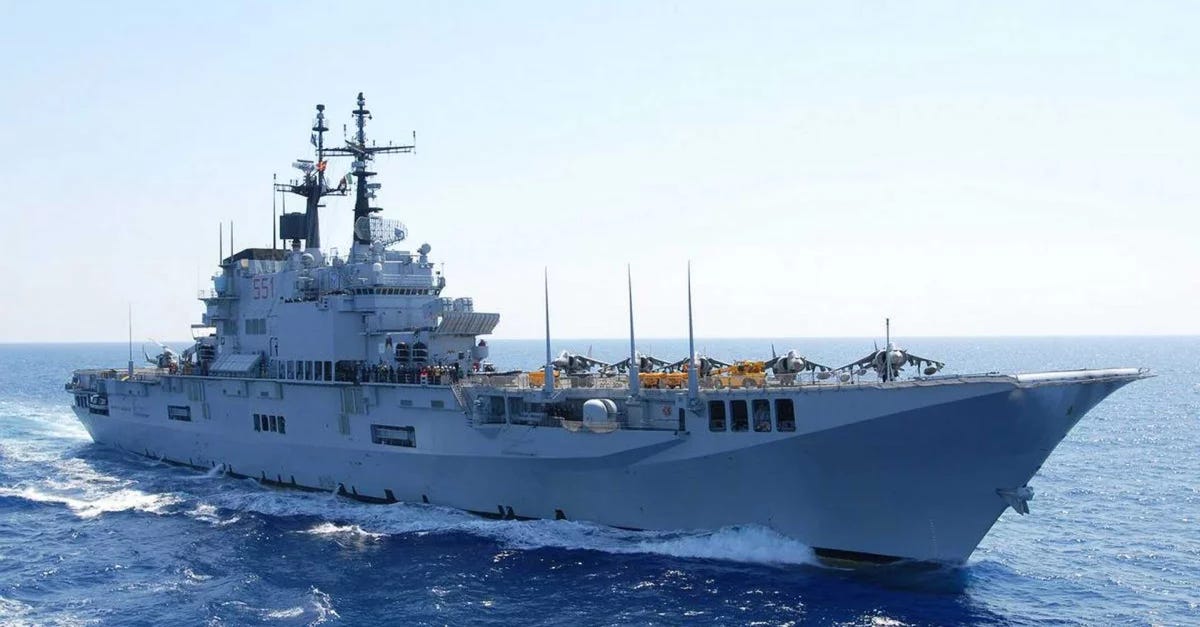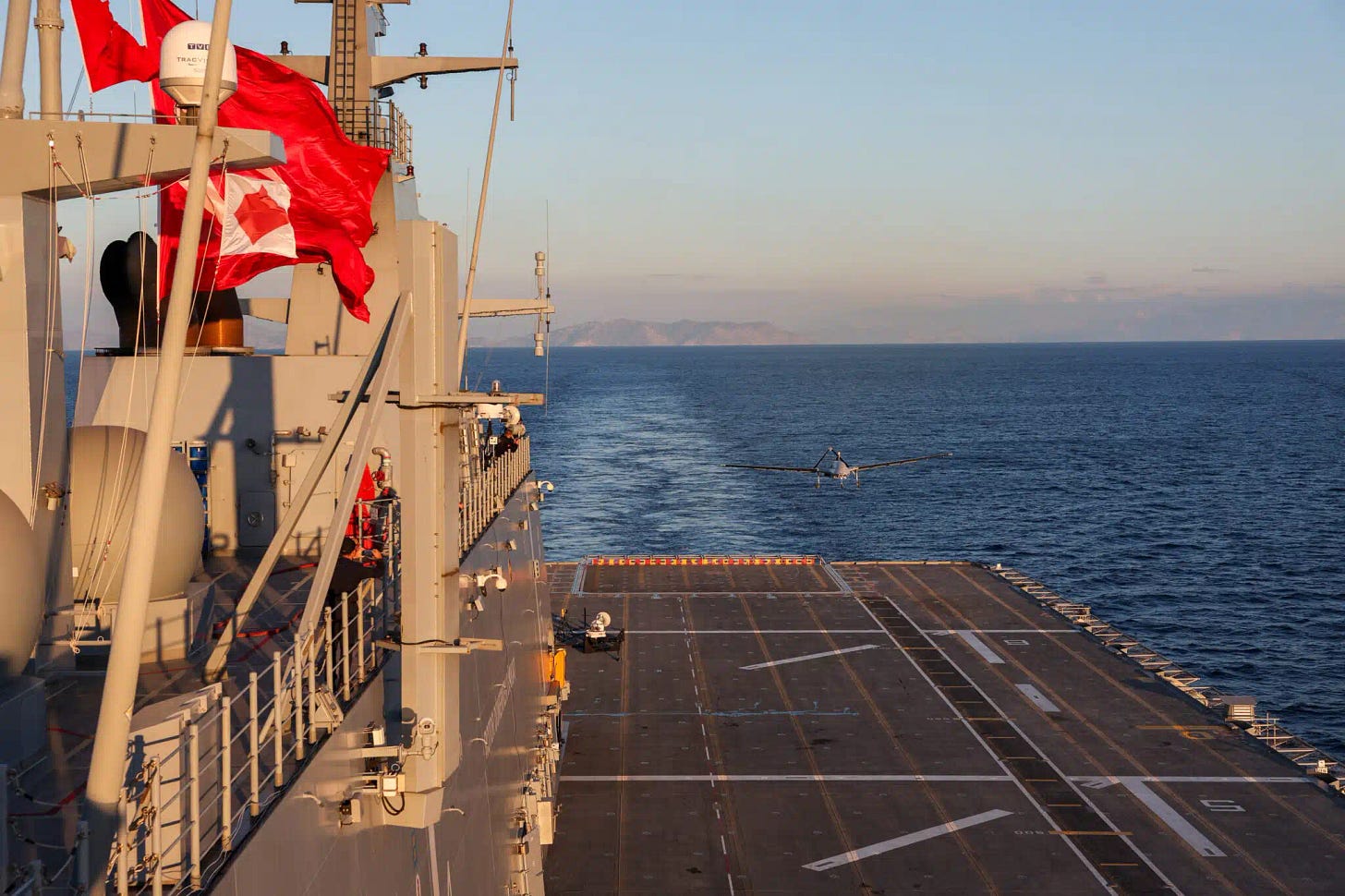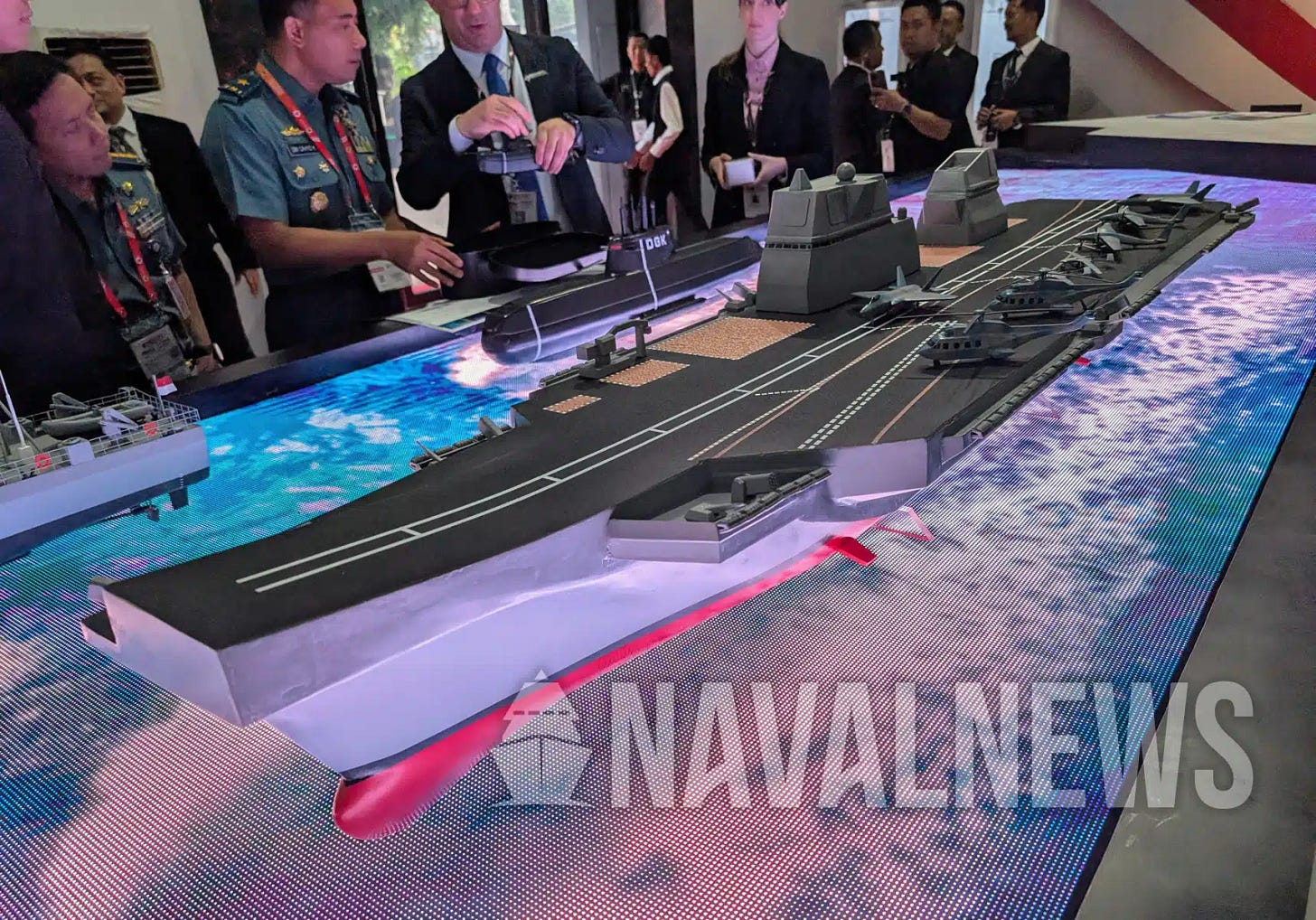Indonesia Eyes Italian Aircraft Carrier: What the Garibaldi Option Offers
Indonesia’s Interest in the Giuseppe Garibaldi Signals a Strategic Shift Toward Drone-Carriers and Expanded Maritime Reach in the Indo-Pacific
As Indo-Pacific waters grow increasingly contested, regional navies are actively seeking platforms that enhance persistence, flexibility, and maritime domain awareness without breaking defense budgets. Indonesia’s recent interest in acquiring Italy’s retired Giuseppe Garibaldi aircraft carrier—combined with a potential procurement of Bayraktar TB3 drones—raises important questions about the evolving character of naval aviation in Southeast Asia.
At the Indodefence 2025 expo in Jakarta, local defense firm REPUBLIKORP, in collaboration with PT Palindo Marine, showcased a striking model of a future Indonesian naval fleet. While the digital label called the carrier model Giuseppe Garibaldi, the design appeared conceptual—featuring drones and jets not currently part of Indonesia’s inventory. The visual centerpiece? Bayraktar TB3 drones poised for takeoff, signaling a potential shift toward unmanned naval aviation.
Fincantieri officials later confirmed Indonesia’s interest in Giuseppe Garibaldi, though any transfer remains at the early discussion phase. So, what would Indonesia gain from a carrier like this, especially if paired with a fleet of drones?
Let’s examine the possibilities through two key lenses: regional carrier trends and unmanned aviation integration.

Carrier Capabilities in the Region: Indonesia Joins the Conversation
Aircraft carriers remain rare in Southeast Asia. Thailand’s Chakri Naruebet, a light carrier acquired in the 1990s, has barely seen operational use and lacks a fully-fledged fixed-wing aviation wing today. Outside Southeast Asia, China and India are rapidly scaling up their blue-water capabilities, while Australia and South Korea invest in large-deck amphibious ships with potential for UAV or STOVL integration.
Indonesia has long lacked a carrier presence, focusing instead on fast attack craft, corvettes, and submarines suitable for archipelagic defense. But that approach may be shifting. The Garibaldi, with 15–20 years of operational life remaining, presents a relatively low-cost entry point into carrier operations. Fincantieri notes the vessel is modular and versatile—capable of operating drones, helicopters, and light fixed-wing aircraft.
This shift wouldn’t just be symbolic. Indonesia controls vast waters and critical maritime chokepoints. A light carrier equipped with drones could provide persistent blue-water surveillance, respond rapidly to emergencies, and contribute to disaster relief—capabilities of growing importance in an island-dense environment marked by illegal fishing, maritime boundary disputes, and frequent natural disasters.

Drone-Centric Aviation: TB3 on Deck
The Bayraktar TB3 stands out as a practical carrier-capable UAV for nations with limited deck space or STOVL compatibility. Unveiled by Baykar Technologies, the TB3 offers short takeoff capability and has already been integrated aboard Turkey’s TCG Anadolu. It’s now undergoing trials and generating serious interest—including from Indonesia.
At Indodefence, Baykar revealed that Indonesia is in talks to acquire 60 TB3 drones, divided between shipborne and land-based variants. This represents the first public indication that the TB3 exists in two configurations—with the land-based model offering extended endurance, payload, and fuel capacity.
Why TB3 matters:
Deck-Friendly: Requires no catapult launch system, making it ideal for small or retrofitted carriers.
Persistent ISR: With long loiter times, TB3s provide superior maritime domain awareness in areas where P-8-class manned aircraft are too costly.
Modular Payloads: Precision-guided munitions, electronic warfare modules, or communications relays—customizable per mission.
If paired with Giuseppe Garibaldi, a TB3 air wing would give the Indonesian Navy the ability to operate far from shore without the logistics burden of maintaining manned fighter squadrons at sea.
A Hybrid Carrier Model: Cost-Effective Deterrence
Indonesia isn’t expected to become a peer competitor to China or India in naval aviation. But by adopting a hybrid drone carrier approach, it can secure its maritime interests, extend its surveillance reach, and reinforce its role as a leading regional maritime power.
This model offers:
Lower Risk Entry into Carrier Operations: With drones instead of manned jets, training, maintenance, and safety burdens are significantly reduced.
Disaster Response Capacity: The Garibaldi has a history of supporting humanitarian missions, such as post-earthquake relief in Haiti.
Strategic Autonomy: Pairing Turkish drones with Italian naval design reflects Indonesia’s multipolar procurement strategy—diversifying partners without overdependence on any one supplier.
Of course, challenges remain. Carrier aviation requires doctrinal shifts, logistical infrastructure, and long-term investment in carrier battle group support. None of these exist yet in Indonesia. And no formal deal has been signed.
But the intent is clear: Indonesia is exploring serious naval aviation capabilities tailored to its geography and budget—leveraging drones as force multipliers rather than relying solely on legacy manned fighters.
Final Thoughts: A Maritime Pivot in Progress?
Indonesia’s consideration of the Giuseppe Garibaldi—even if conceptual—points to a growing awareness in Jakarta: maritime power projection no longer means aircraft carriers with manned jets alone. As drone technologies mature and naval procurement adapts, even middle powers can field effective, scalable carrier solutions.
In a region where maritime challenges are intensifying—from the South China Sea to illegal incursions in the Natuna Islands—this could mark the beginning of a very different kind of naval posture for Southeast Asia’s largest state.
For now, Indonesia is still exploring. But if it proceeds, it won’t just be acquiring a ship—it will be rewriting what maritime power looks like in the Indo-Pacific.
Editor’s Note: the following op-ed draws on a mix of articles, multimedia, and forums I follow, with sources cited accordingly. All opinions expressed are solely my own and do not represent the views of anyone else.





